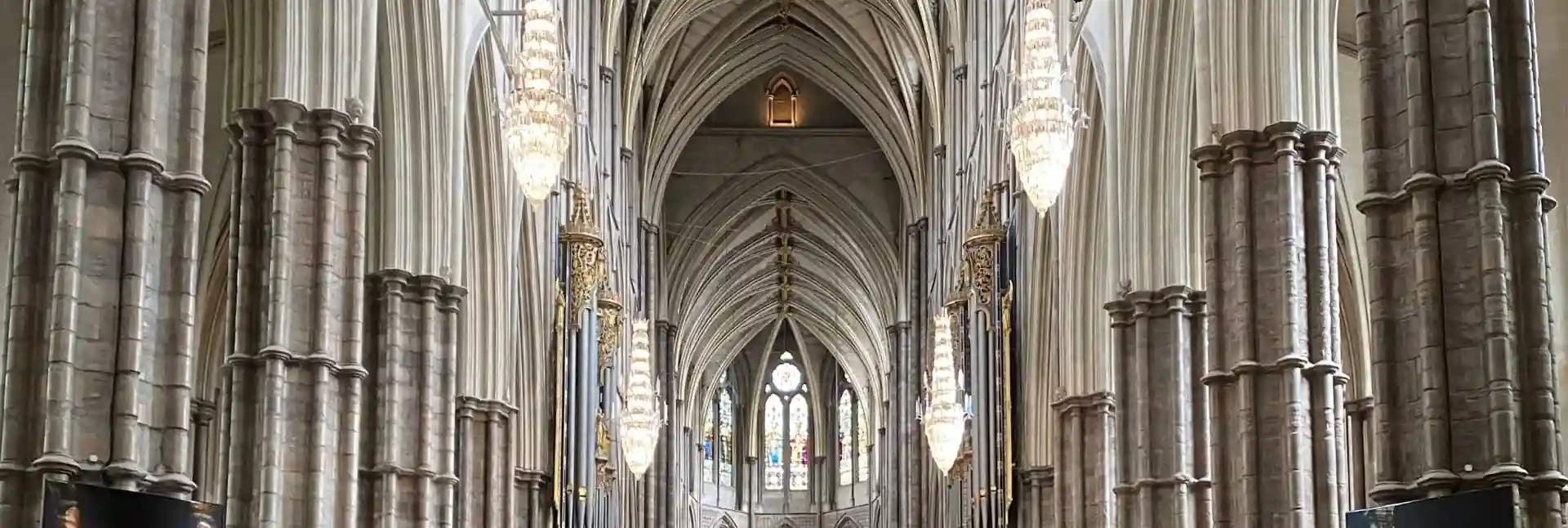
What Makes Westminster Abbey Special and Why Should You Visit It?
From royal coronations to the burials of notable figures, royal weddings, and national commemorations, the Abbey has been — and continues to be — one of the most representative landmarks of British identity. But its charm does not rely solely on its architecture or official functions: it lies in its deep symbolism and the human legacy it preserves within its walls. Want to know what makes Westminster Abbey so special? Let us tell you.
A history spanning over a thousand years
The history of the Abbey dates back to the 10th century, when Saint Dunstan founded a Benedictine monastery on the site. Later, Edward the Confessor intended to build the abbey as his final resting place. However, the current building began to take shape in the 13th century under King Henry III.
One of the most important milestones occurred in 1066, when William the Conqueror was crowned King of England here, beginning a tradition that continues to this day. In fact, every British monarch has been crowned at Westminster Abbey, reinforcing its central role in the monarchy.
In 1987, UNESCO recognized its universal value by declaring it a World Heritage Site, not only for its architecture but for its historical and cultural significance.
The ceremonial heart of the British monarchy
More than just a place of worship, Westminster Abbey serves as the ceremonial epicenter of the United Kingdom. It hosts major state events, from coronations to royal weddings — such as that of Prince William and Catherine Middleton in 2011 — and funerals, like that of Queen Elizabeth The Queen Mother.
One of its most iconic features is the Coronation Chair, one of the oldest pieces of furniture still in use in Europe. During coronations, it holds the “Stone of Destiny,” an ancient symbol of Scottish royalty that is specially brought to Westminster for these occasions.
What does it mean to be a Royal Peculiar?
One of the lesser-known yet most fascinating aspects of Westminster Abbey is that it is a “Royal Peculiar”. What does this mean? It means the Abbey does not belong to any diocese and is not under the authority of a bishop or archbishop, as is typical of other Anglican churches. Instead, it answers directly to the British monarch.
This status dates back to the Anglo-Saxon period, when some churches wanted to demonstrate their loyalty to the king rather than to a local bishop. Today, its purpose is mostly traditional and administrative, but the title grants the Abbey special autonomy within the Church of England.
Thanks to this, Westminster Abbey can function as a religious, political, and symbolic space without intermediaries, further solidifying its unique role in national life.
A mausoleum of great minds and historical figures
More than a church, Westminster Abbey is also a pantheon of British history. Here lie 17 monarchs, including Elizabeth I of England and Mary, Queen of Scots — ironically buried facing one another. It also houses the remains of Edward the Confessor, one of England’s most venerated saints, whose shrine still attracts pilgrims.
But it’s not just kings who rest here. The Abbey is the resting place of some of the brightest minds in history: Isaac Newton, Charles Darwin, and more recently Stephen Hawking were buried within its walls as a symbol of national respect.
We must not forget the Poets’ Corner, a section where authors such as Geoffrey Chaucer, Charles Dickens, Rudyard Kipling, Jane Austen and many others are buried or commemorated.
Gothic architecture in its purest form
If you're wondering what makes Westminster Abbey so special, we must highlight its architecture. It's a masterpiece of English Gothic style. Its soaring central nave — the tallest in England — together with its fan vaults and multicolored stained glass, create an atmosphere that’s hard to describe. You’ll have to see it for yourself.
Of particular note is the Henry VII Chapel, a Gothic gem with a fan vault that seems suspended from the sky. Other standout features include the high altar, the choir, elaborately sculpted funerary monuments, and the organ that accompanies major ceremonies.
Westminster Abbey in the public imagination
Thanks to its central role in British history, Westminster Abbey has featured in many documentaries, films, and literary works. Its unmistakable Gothic silhouette is present in all kinds of visual representations of London.
In fact, its inclusion in Dan Brown’s best-selling novel “The Da Vinci Code” brought more “trouble” than success. As the Abbey was fictionalized, many fans arrived expecting it to match the book’s depiction. Thousands were confused to find it wasn’t as described, prompting the authorities to create explanatory materials to distinguish fact from fiction.
Discover for yourself what makes Westminster Abbey special
Westminster Abbey is more than a tourist attraction — it’s a living monument that continues to shape British history. Visiting it is the best way to appreciate its symbolic depth, artistic richness, and spiritual significance. If you're planning a trip to London and want to uncover its most iconic landmarks without missing a single secret, don’t hesitate to book tickets to Westminster Abbey. We’re waiting for you!